Medium format has become far more accessible to more people than it has ever been in the past, and that includes the ability to shoot video on the giant sensors. In this 9.5-minute video, Photographer Jay P. Morgan looks to find out if shooting RAW video on medium format is something you should even do.
Once you get past issues with rolling shutter (Morgan found that it wasn’t too bad when the camera is locked off), there are some benefits to shooting with medium format that are most noticeable when compared to traditional video camcorders. For comparison purposes, Morgan and co-host Kenneth Merrill shoot the same scene in RAW on the Canon C200, the Panasonic S1H, and on the medium format Fujifilm GFX100 to see what they could notice as differences.
These three cameras were chosen because the C200 has a super-35 sized sensor, the S1H has a full-frame sensor, and the GFX is, of course, medium format.
“Right off as you look at this there are several things if you just look through them very quickly,” Morgan says. “You can see the detail becomes better when you go from Super 35 to that full frame. It looks nicer. But then when you go to that medium format it is so pretty and (there is) so much detail.”
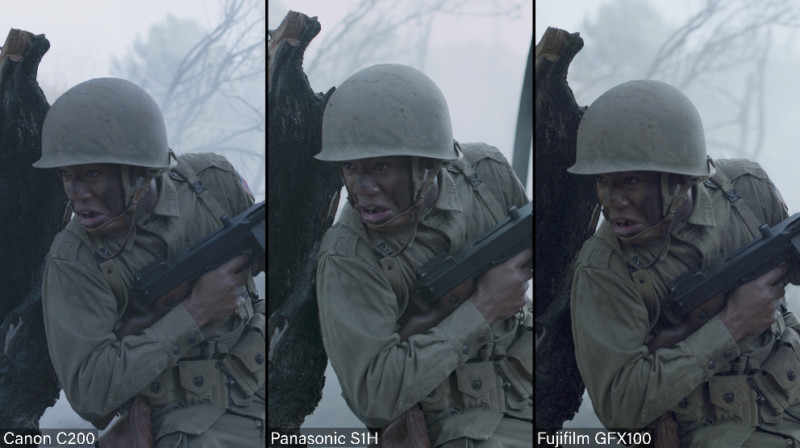
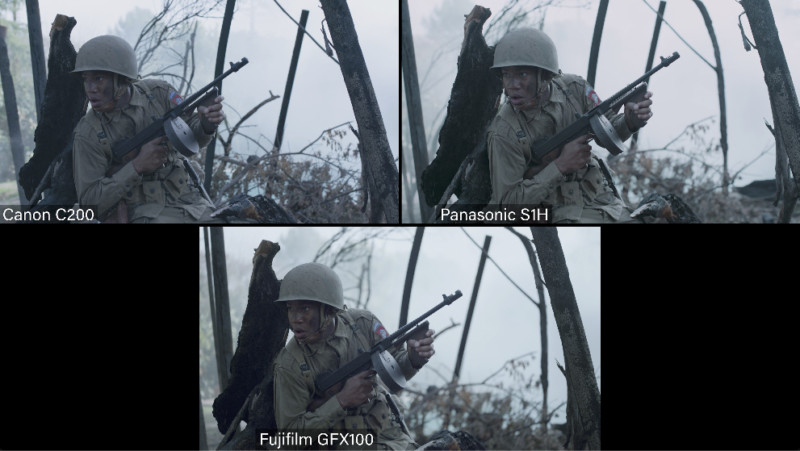
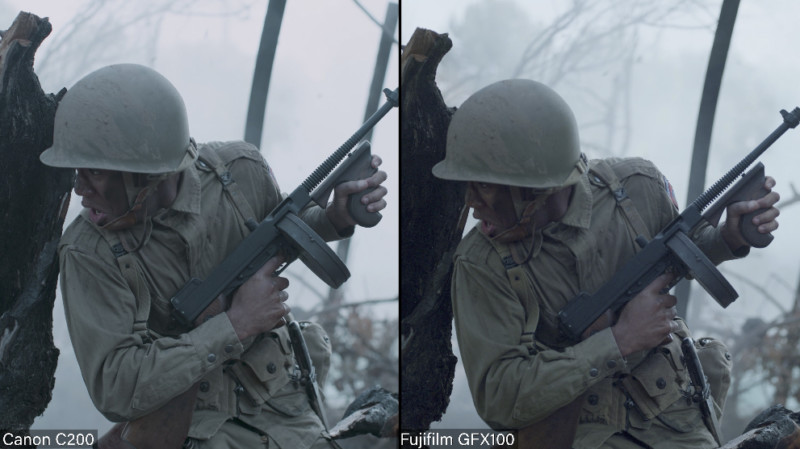
Morgan says that for him, the most drastic visual difference is between the C200 and the S1H.
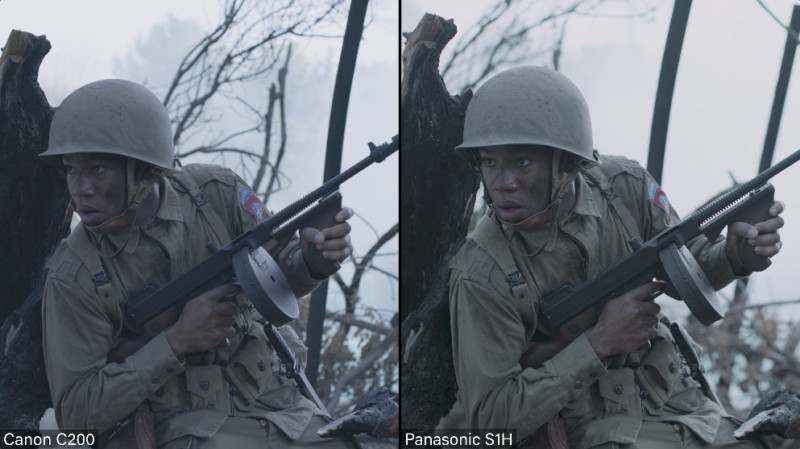
“I feel like the S1H image really pops out at you. And then you get it even more with a GFX. But for me, it’s not as noticeable. I do notice more gritty detail in the GFX. You certainly see the focus if you look at the depth of field there. If you look at each one of these next to each other it’s a much shallower depth of field at f/2.8 on that medium format compared to the Super 35,” he says.
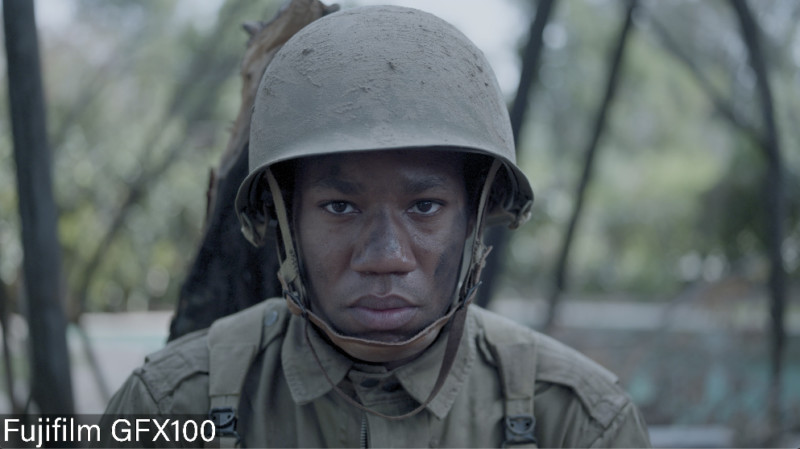
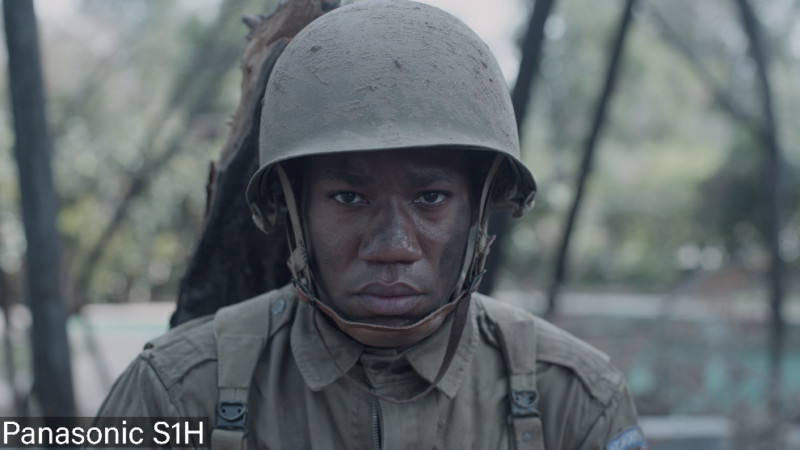

Image quality at low ISOs is one thing, but Morgan wanted to see how each of the cameras held up at increasingly higher ISOs.
“We just wanted to start as low as we could and that’s 1250 for the GFX,” Morgan says. “So we went 1250 across the board. So the light we have on his face is pulsating. The flame is kind of flickering. And so what you see in the black deep shadows is that kind of pulse from the flame. It’s not some kind of issue with the ISO.”
“So the S1H is really clean at 1250,” he continues. “It seems cleaner than the GFX 100 to me, and that’s native for the GFX 100. The GFX 100 is already a little bit noisy.

At ISO 3200, the Canon starts to show weaknesses due to the smaller sensor
“So the Canon is not looking terribly great, but it’s not a huge step up from 1250,” He says. “If we go to the S1H, I feel like there’s a big change with the S1H. It’s not doing very well here. We see a lot of noise. And we usually see that with the S1H as you approach that dual gain of 4000. That’s when it kind of gets better again. So this isn’t that surprising.”
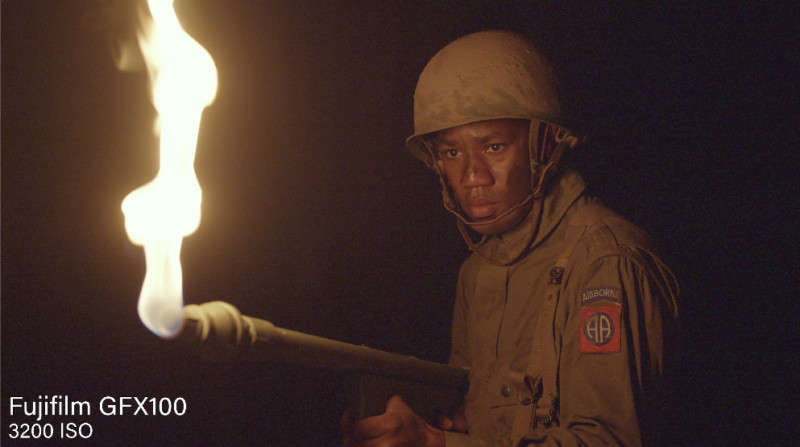

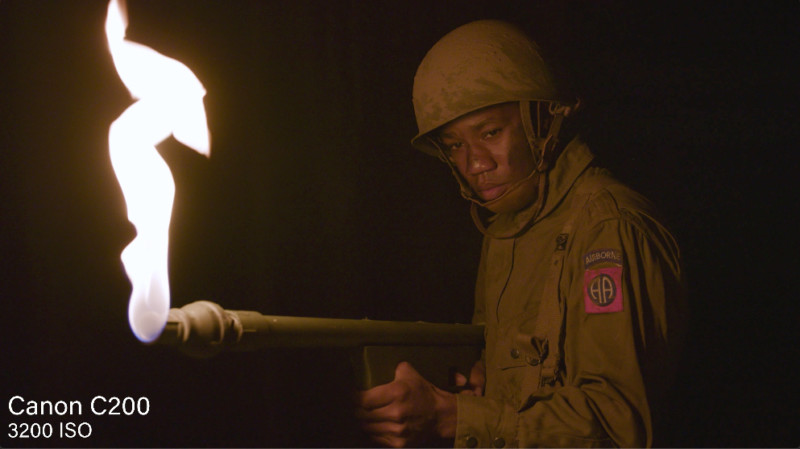
Morgan was surprised to see that the GFX was actually performing really badly at this ISO.
“The GFX is doing terribly the 3200,” he says. “It is honestly not what I expected. I thought it’d be much cleaner at this point. But the photo capabilities don’t always translate to the video capabilities, especially for these hybrid bodies. It is fascinating, because we have tested the GFX 100 with regards to stills and ISO and it performed extremely well. But if we’re not seeing it in this video format at all. I would not want to shoot this above its native ISO.”
In the end, Morgan admits that there wasn’t a big reason to shoot video with medium format if a full frame video camera is available.
“This step up to medium format didn’t feel like such a jump with these cameras, at least at this level. But there was a difference,” he says. “The color depth was just fabulous. I think it’s just a little early, I think we’re going to see medium format come into its own. As we’ve seen the full-frame kind of become the standard, then we’ll move up to medium format. Maybe it’ll cross a barrier where it’s just more cost and more difficult than it’s worth. I don’t know, it’s possible.”
For more from Jay P. Morgan, make sure to subscribe to his YouTube Channel.